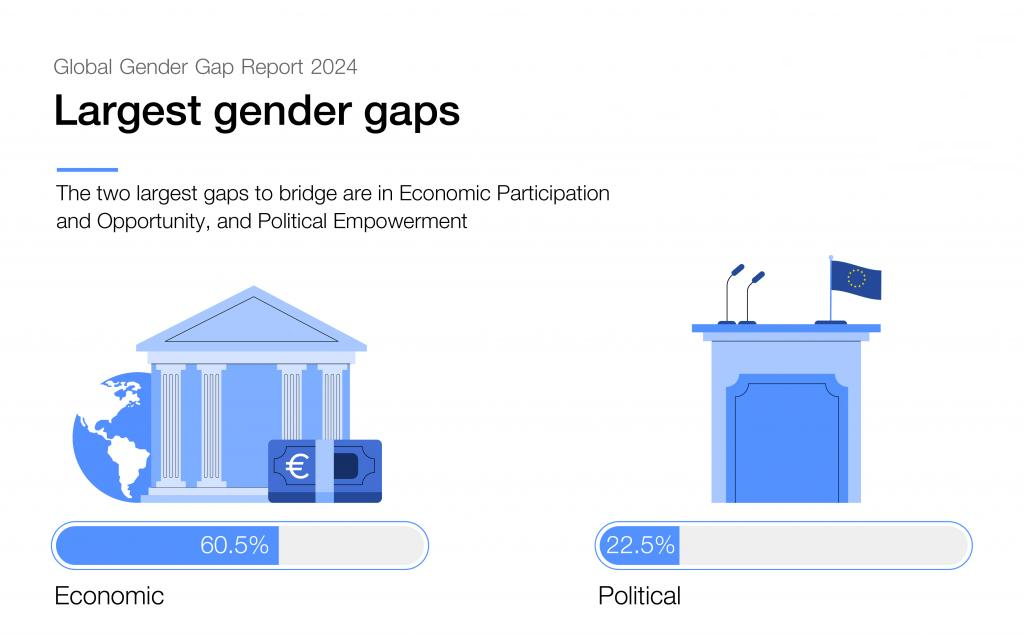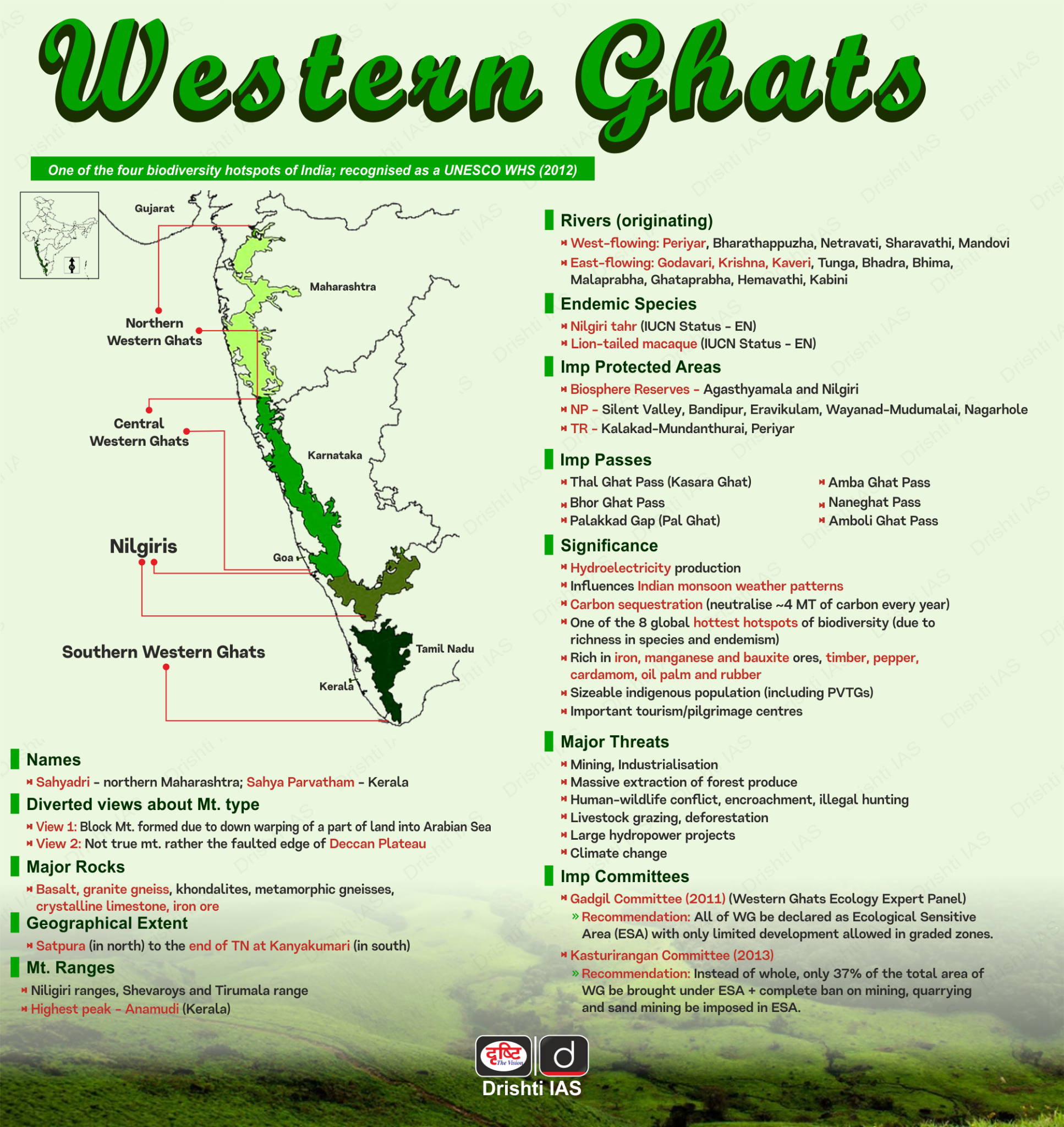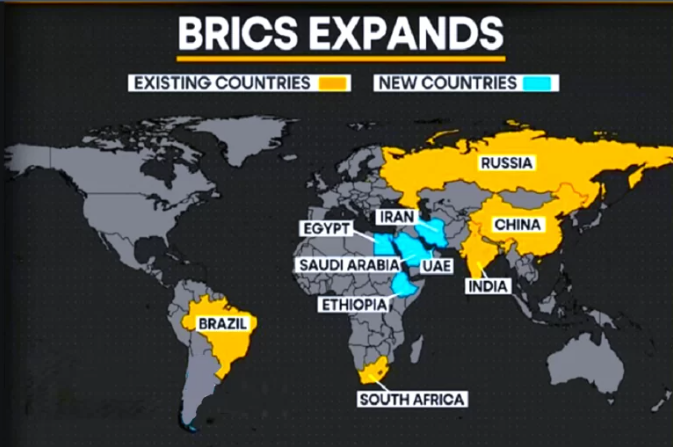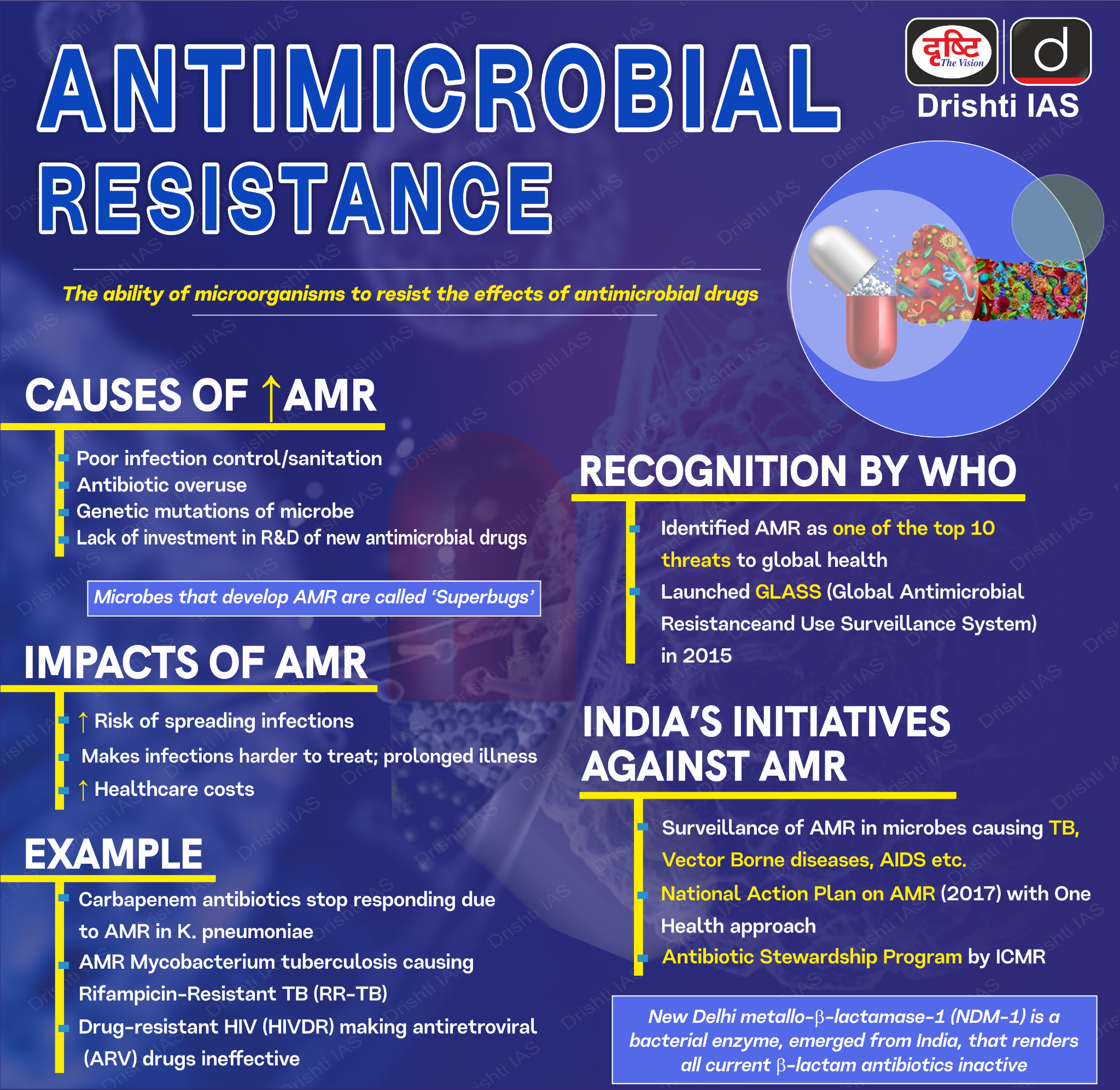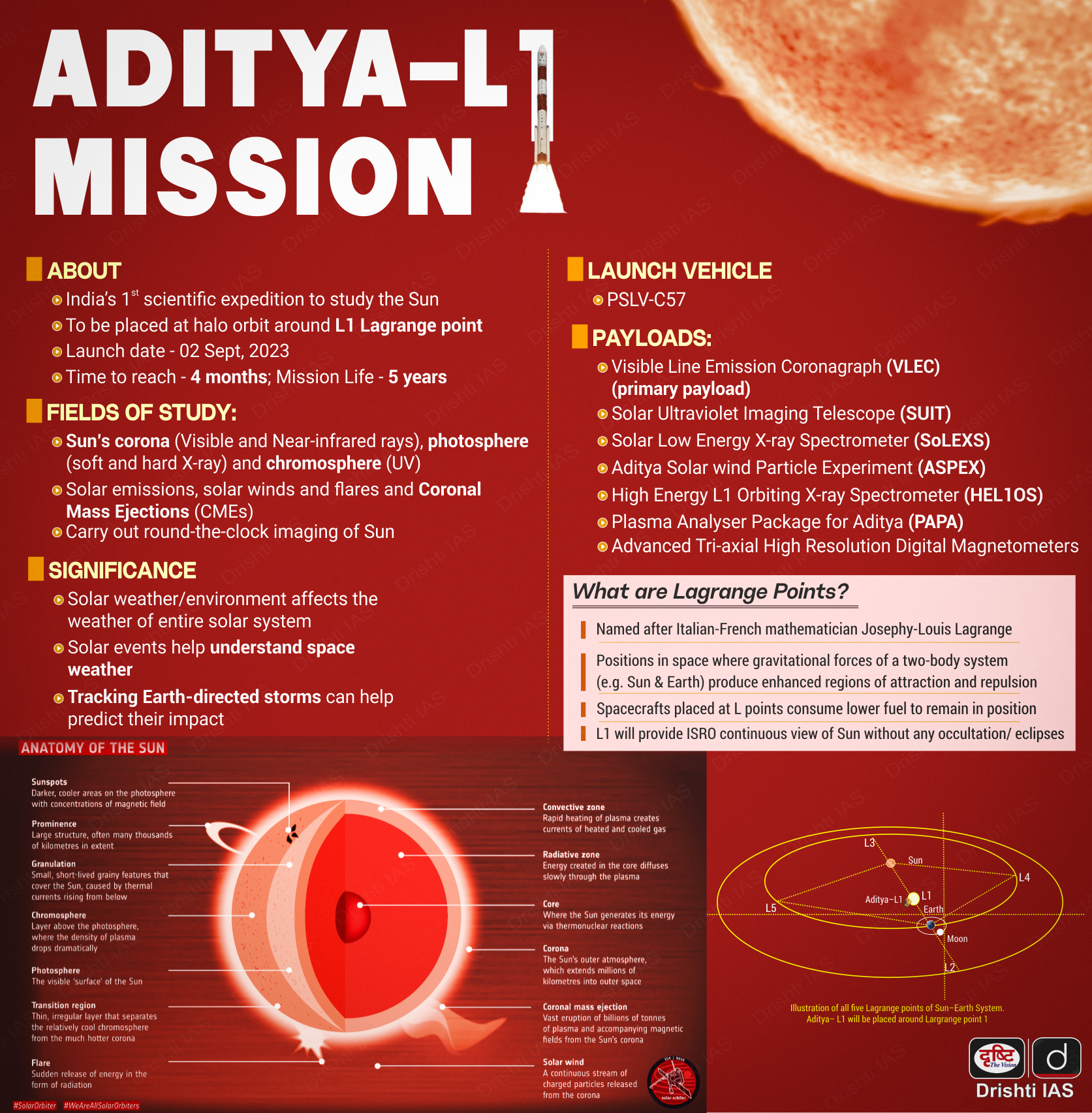Social Justice
Global Gender Gap Report 2024
For Prelims: Global Gender Gap Report 2024, WEF, Global Gender Gap Index, Gender Parity, Local Governance
For Mains: Global Gender Gap Report 2024, Issues of Gender Inequality in Different Sectors.
Why in News?
Recently, the World Economic Forum released the 18th edition of its annual Global Gender Gap Report for 2024, comprehensively benchmarking gender parity across 146 economies worldwide.
What is the Global Gender Gap Index?
- About:
- It benchmarks countries on their progress towards gender parity in four Key dimensions with Submatrices.
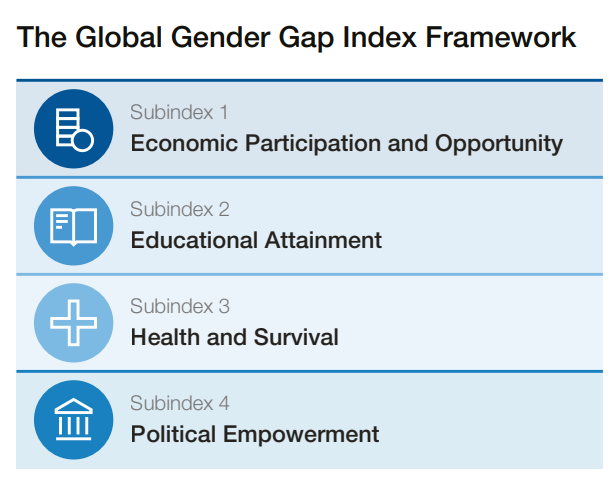
- On each of the four sub-indices as well as on the overall index the GGG index provides scores between 0 and 1, where 1 shows full gender parity and 0 is complete imparity.
- It is the longest-standing index, which tracks progress towards closing these gaps over time since its inception in 2006.
- Objectives:
- To serve as a compass to track progress on relative gaps between women and men in health, education, economy and politics.
- Through this annual yardstick, the stakeholders within each country are able to set priorities relevant to each specific economic, political and cultural context.
- It benchmarks countries on their progress towards gender parity in four Key dimensions with Submatrices.
What are the Key Findings of the Report?
- Overall Findings:
- The global gender gap score in 2024 is 68.5%, meaning 31.5% of the gap remains unaddressed. Progress has been extremely slow, with only a 0.1% point improvement from 2023.
- At the current rate, it will take 134 years to reach full gender parity globally far beyond the 2030 SDG target.
- The gender gaps remain largest in Political Empowerment (77.5% unaddressed) and Economic Participation & Opportunity (39.5% unaddressed).
- Top-Ranking Countries:
- Iceland (93.5%) remains the world's most gender-equal society for the 15th consecutive year. It is followed by Finland, Norway, New Zealand and Sweden in the top 5 rankings.
- 7 out of the top 10 countries are from Europe (Iceland, Finland, Norway, Sweden, Germany, Ireland, Spain).
- Other regions represented are Eastern Asia and the Pacific (New Zealand at 4), Latin America and the Caribbean (Nicaragua at 6), and Sub-Saharan Africa (Namibia at 8).
- Spain and Ireland made notable jumps into the top 10 in 2024, climbing 8 and 2 ranks respectively compared to 2023.
- Regional Performance:
- Europe leads with 75% of its gender gap closed, followed by Northern America (74.8%) and Latin America & Caribbean (74.2%).
- The Middle East and North Africa region ranks last at 61.7% of its gender gap closed.
- Southern Asia region ranks 7th out of 8 regions with a gender parity score of only 63.7%.
- Economic & Employment Gaps:
- Women's workforce representation lags behind men's across nearly every industry and economy at 42% overall and only 31.7% in senior leadership roles.
- The "leadership pipeline" shows a 21.5% point drop from entry-level to managerial level for women globally.
- Women's hiring into leadership roles deteriorated in 2023-24 due to worsening economic conditions.
- Care Burden Impact:
- Women’s workforce participation is recovering from the recent surge in caregiving responsibilities, highlighting the urgent need for equitable care systems.
- Equitable care policies like paid parental leave are increasing but remain inadequate in many countries.
- Technology & Skills Gaps:
- Women remain underrepresented in STEM at 28.2% of that workforce versus 47.3% in non-STEM roles.
- Gender gaps exist in skills like AI, big data and cybersecurity which will be crucial for the future of work.
How has India Fared in the Gender Gap Report 2024?
- India’s Rank: India has slipped two places in the global rankings to 129th in 2024 from 127th in 2023 out of 146 countries.
- Within South Asia, India ranked fifth after Bangladesh, Nepal, Sri Lanka, and Bhutan. Pakistan ranked last in the region.
- Economic Parity: India is among the countries with the lowest levels of economic parity, similar to Bangladesh, Sudan, Iran, Pakistan, and Morocco, with less than 30% gender parity in estimated earned income.
- Educational Attainment: India showed the best gender parity in secondary education enrolment.
- Political Empowerment: India ranked 65th globally in political empowerment of women and 10th in parity of years with female/male heads of state over the past 50 years.
- However, women's representation at the federal level, in Ministerial positions (6.9%), and in Parliament (17.2%) remains low.
- Gender Gap Closure: India has closed 64.1% of its gender gap as of 2024. The slip in ranking from 127th to 129th was primarily due to small declines in 'Educational Attainment' and 'Political Empowerment' parameters, although 'Economic Participation' and 'Opportunity' scores saw slight improvements.
Indian Initiatives to Reduce Gender Gap in Social, Economic and Political Life
- Beti Bachao Beti Padhao
- Mahila Shakti Kendra
- Mahila Police Volunteers
- Rashtriya Mahila Kosh
- Sukanya Samriddhi Yojna
- Kasturba Gandhi Balika Vidyalaya
- Political Reservation: The government has reserved 33% of the seats in Panchayati Raj Institutions for women.
- The Constitution (106th Amendment) Act, 2023, has also reserved one-third of all seats for women in Lok Sabha, State legislative assemblies, and the Legislative Assembly of the National Capital Territory of Delhi, including those reserved for SCs and STs.
- Female Entrepreneurship: To promote female entrepreneurship, the Government has initiated Programmes like Stand-Up India and Mahila-e-Haat (an online marketing platform to support women entrepreneurs/SHGs/NGOs), Entrepreneurship and Skill Development Programme (ESSDP).
|
Drishti Mains Question: Q. Critically analyse India's performance in the Global Gender Gap Index,2024. Discuss the key areas of improvement and suggest measures to accelerate gender parity in India. |
UPSC Civil Services Examination, Previous Year Question (PYQ)
Prelims:
Q. Which of the following gives ‘Global Gender Gap Index’ ranking to the countries of the world? (2017)
(a) World Economic Forum
(b) UN Human Rights Council
(c) UN Women
(d) World Health Organization
Ans: (a)
Mains:
Q. Discuss the desirability of greater representation to women in the higher judiciary to ensure diversity, equity and inclusiveness. (2021)

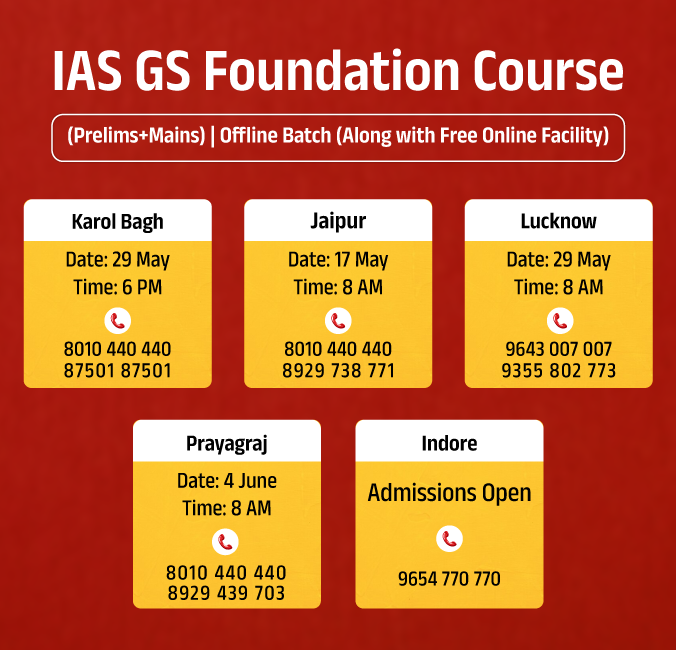
Indian Society
Urbanisation
For Prelims: Asian Development Bank, Census 2011, Ministry of Housing and Urban Affairs (MoHUA), 74th Constitutional Amendment Act 1992, Smart Cities Mission, AMRUT Mission, Swachh Bharat Mission-Urban, Pradhan Mantri Awas Yojana-Urban, Aspirational District Programme, Deen Dayal Antyodaya Yojana - National Urban Livelihood Mission (DAY-NULM), Air pollution
For Mains: India’s Initiatives Related to Urban Governance, Challenges related to urbanisation
Why in News?
Recently, Indian urban centres have been grappling with significant challenges such as water shortages, urban heating, and infrastructural strains amidst rapid urbanisation.
What is Urbanisation?
- About:
- Urbanisation is the process of people moving from rural areas (the countryside) to urban areas (towns and cities). This trend has been happening for centuries, but it has accelerated in recent decades.
- Urbanisation is identified by the United Nations as one of the four demographic mega-trends alongside population growth, ageing, and international migration.
- Types:
- Planned Settlements: Planned urban settlements in India are developed by government agencies or housing societies according to officially approved plans.
- These plans consider various factors, including physical, social, and economic considerations, to ensure orderly development.
- The objective is to create sustainable and livable environments with adequate infrastructure and services.
- Unplanned Settlements: Unplanned settlements arise without legal approval, either on government land or private property, in a disorderly manner.
-
These areas consist of permanent, semi-permanent, and temporary structures, frequently found near city drains, railway tracks, low-lying areas prone to flooding, or on agricultural land and green belts surrounding cities.
-
- Planned Settlements: Planned urban settlements in India are developed by government agencies or housing societies according to officially approved plans.
- Trends in Urbanisation:
- According to the Asian Development Bank's 2019 report, the global urban population has surged from 751 million in 1950 (30% of the world's population) to 4.2 billion in 2018 (55% of the world's population).
-
Projections indicate that this figure will rise to 5.2 billion by 2030 (60% of the global population) and 6.7 billion by 2050 (68% of the global population).
-
-
India's urban population has grown steadily. According to the 2011 Census, urbanisation increased from 27.7% in 2001 to 31.1% in 2011, representing a total of 377.1 million people and an annual growth rate of 2.76%.
-
This trend has shifted focus from large Tier 1 cities (1,00,000 and above) to medium-sized towns, influenced by various push and pull factors such as employment, education, and security.
- According to Ministry of Housing and Urban Affairs in terms of the absolute number of persons living in urban areas, Maharashtra continues to lead with 50.8 million persons which comprises 13.5% of the total urban population of the country.
- Uttar Pradesh accounts for about 44.4 million, followed by Tamil Nadu at 34.9 million.
- According to the Asian Development Bank's 2019 report, the global urban population has surged from 751 million in 1950 (30% of the world's population) to 4.2 billion in 2018 (55% of the world's population).
- Reasons for Urbanisation:
-
Trade And Industry: Trade and industry drive urbanisation by attracting labor, stimulating infrastructure development, and providing access to markets and innovation hubs.
-
Economic Opportunities: Cities offer more job opportunities than rural areas. This is because they are home to businesses, factories, and other institutions.
-
Education: Cities have better schools and universities than rural areas. This can attract people who want to improve their education and job prospects.
-
Better Lifestyle: Cities provide more services like hospitals and libraries, and offer a livelier lifestyle with more social and cultural opportunities compared to rural areas.
- Migration: Migration significantly contributes to urbanisation in India, leading to the growth of informal settlements. Migrants often settle in unplanned colonies due to the high cost of living in more formal urban areas.
- This has resulted in a significant number of informal settlements, such as slums and unauthorised colonies, which lack basic amenities like clean water and sanitation.
-
India’s Initiatives Related to Urban Governance
- Institutions:
- Ministry of Housing and Urban Affairs (MoHUA): Formulates national policies and oversees central government schemes related to urban development.
- State Departments of Urban Development: Implement central government policies and enact state-specific urban development regulations.
- Municipal Corporations/Municipalities: They are responsible for local-level planning, development control, and service delivery within their jurisdictions.
- Urban Development Authorities (UDAs): Special agencies established for the development of specific urban areas or projects.
- Constitutional and Legal Frameworks:
- (Articles 243Q, 243W): Empowers local governments (Municipalities) for urban planning and development within their jurisdictions.
- 74th Constitutional Amendment Act, 1992: Provided constitutional status to
- urban local bodies and added Part IX-A to the Constitution.
- 12th Schedule: It contains the powers, authority and responsibilities of Municipalities.
- Government Initiatives:
- India’s Global Commitments Regarding Urban Development:
- The SDGs Goal 11 promotes urban planning as one of the recommended methods for achieving sustainable development.
- The UN-Habitat’s New Urban Agenda was adopted at Habitat III in 2016.
- It puts forth principles for the planning, construction, development, management, and improvement of urban areas.
- The UN-Habitat (2020) suggests that the spatial conditions of a city can enhance its power to generate social, economic and environmental value and well-being.
- UNFCCC Goal: India, at the 26th session of the United Nations Framework Convention on Climate Change (COP 26) in November, 2021, announced its target to achieve net zero by 2070.
- India has ratified the Headquarters Agreement (HQA) between the Government of India and the Coalition for Disaster Resilient Infrastructure (CDRI).
What are the Challenges Related to Urbanisation?
- Environment Related Challenges:
- Air Pollution and Environmental Degradation: Urban areas in India are grappling with severe air pollution levels, primarily due to vehicular emissions, industrial activities, and construction projects.
- Example: According to the World Air Quality Report 2023, 9 of the top 10 most polluted cities are in India.
- Urban Flooding and Drainage Infrastructure: Inadequate stormwater drainage systems and encroachment on natural water bodies lead to frequent urban flooding during monsoons.
- India has experienced major floods in recent years, notably in Hyderabad (2020 and 2021), Chennai (November 2021), Bengaluru and Ahmedabad (2022), parts of Delhi (July 2023), and Nagpur (September 2023), forcing many residents to evacuate.
- Urban Heat Island Effect and Lack of Green Spaces: Rapid urbanisation and loss of green spaces have led to the urban heat island effect, increasing temperatures and energy demand.
- Example: The extreme heatwave in Delhi has driven the city's power demand to a record high of over 8,000 megawatts in May 2024.
- Water Scarcity and Inadequate Water Management: Many cities face acute water shortages due to rapid urbanisation, population growth, and depleting groundwater levels.
- Example: Chennai faced a severe water crisis in 2019, with residents relying on water tankers and desalination plants. Also, the recent water crisis in Bengaluru highlights the depth of the issue.
- Air Pollution and Environmental Degradation: Urban areas in India are grappling with severe air pollution levels, primarily due to vehicular emissions, industrial activities, and construction projects.
- Inadequate Housing and Slum Proliferation: According to the Ministry of Housing and Urban Affairs, the urban housing shortage in India was around 18.78 million units between 2012-27, with over 65 million people living in slums or informal settlements.
- It results in straining infrastructure, exacerbating poverty, hindering planned development, and reducing overall livability and social cohesion within urban areas.
- Traffic Congestion and Mobility Challenges: Rapid urbanisation and the influx of private vehicles have led to severe traffic congestion, increasing commute times and hampering productivity.
- Example: In Bengaluru, the average traffic speed during peak hours is estimated to be around 18 km/h, resulting in significant economic losses due to lost productivity and fuel wastage.
- Inadequate Solid Waste Management: Indian cities struggle with the management of solid waste, leading to piling garbage and health hazards.
- Example: According to the Central Pollution Control Board, Indian cities generate approximately 62 million tons of municipal solid waste annually, with only around 20% of it being processed or treated properly.
- Issue of Cybersecurity and Resilient Digital Infrastructure: With the increasing digitalization in major urban spaces, digital threats are on the rise and building resilient digital infrastructure is a critical issue.
- The ransomware attack on AIIMS Delhi in 2022, highlights the vulnerability of urban digital systems.
What are the Steps Needed to Address Urban Challenges?
- Environment Related Initiatives:
- Sponge City Concept and Permeable Urban Landscapes: Implementing the "Sponge City" concept, which involves the integration of permeable pavements, green roofs, rainwater gardens, and other water-absorbing features into urban landscapes.
- Distributed Waste-to-Energy and Decentralised Waste Management Systems: Incentivizing community-based waste management initiatives and promoting public-private partnerships for waste collection, sorting, and processing.
- Smart Water Management and Recycling Infrastructure: Deploying smart water metering and monitoring systems to detect leaks, optimize water distribution, and promote efficient water usage.
- Urban Digital Twins and Predictive Modeling: Developing digital twins of urban areas, which are virtual replicas of cities, to simulate and analyse various scenarios, infrastructure projects, and environmental impacts.
- Integrating digital twins with urban governance platforms to enable data-driven decision-making, citizen engagement, and participatory urban planning processes.
- Smart City Infrastructure: Democratizing smart city technologies, such as intelligent traffic management systems, smart grids, and Securing Internet of Things (IoT)-enabled public services, to improve efficiency, reduce carbon emissions, and enhance the quality of life for citizens.
- Cybersecurity and Digital Infrastructure Resilience: Investing in robust cybersecurity measures, including advanced encryption, access controls, and real-time threat monitoring, to protect critical urban digital infrastructure from cyber threats.
- Accessibility and Awareness: The government's efforts to address urbanisation through various initiatives often face significant challenges in terms of accessibility. Therefore better dissemination of information and participative governance can be a tool of inclusivity.
|
Drishti Mains Question: Q. Urbanisation in India has led to a dichotomy between planned and unplanned settlements, creating significant socio-economic and infrastructural challenges. Comment. |
UPSC Civil Services Examination, Previous Year Question (PYQ)
Prelims:
Q. With reference to the Indian economy after the 1991 economic liberalization, consider the following statements: (2020)
- Worker productivity (Rs. per worker at 2004-05 prices) increased in urban areas while it decreased in rural areas.
- The percentage share of rural areas in the workforce steadily increased.
- In rural areas, the growth in non-farm economy increased.
- The growth rate in rural employment decreased.
Which of the statements given above is/are correct?
(a) 1 and 2 only
(b) 3 and 4 only
(c) 3 only
(d) 1, 2 and 4 only
Ans: (b)
Mains:
Q. The frequency of urban floods due to high intensity rainfall isincreasing overthe years. Discussing the reasons for urban floods, highlight the mechanisms for preparedness to reduce the risk during such events. (2016)


Biodiversity & Environment
Western Ghats Eco-Sensitive Area
For Prelims: Western Ghats, Ecologically Sensitive Areas (ESA), Gadgil Committee, Western Ghats Ecology Expert Panel (WGEEP), Kasturirangan Committee
For Mains: Significance of Western Ghats, Threats Faced by Western Ghats
Why in News?
Recently, Karnataka, Maharashtra, and Goa, three of the six states where the Centre has proposed eco-sensitive areas (ESAs) to protect the Western Ghats have requested a reduction in the extent of these ESAs to permit development projects.
What is the Western Ghats Eco-Sensitive Area?
- About:
- In 2013, the government constituted a High-Level Working Group under the Chairmanship of Dr. Kasturirangan to make recommendations for conserving and protecting the biodiversity of Western Ghats while allowing for sustainable and inclusive development of the region.
- Previously, the Madhav Gadgil Committee (2011) also gave its recommendations of conservation of Western Ghats.
- The Committee had recommended that identified geographical areas falling in the six States of Kerala, Karnataka, Goa, Maharashtra, Gujarat and Tamil Nadu be declared ass ESA.
- The Committee recommended bringing just 37% of the Western Ghats under the ESA, down from the 64% suggested by the Gadgil Committee report.
- In 2013, the government constituted a High-Level Working Group under the Chairmanship of Dr. Kasturirangan to make recommendations for conserving and protecting the biodiversity of Western Ghats while allowing for sustainable and inclusive development of the region.
- Response from States:
- All the involved States recognised a need to protect the Western Ghats, however, they expressed their concerns related to the allowed activities and extent of the area mentioned in the draft notification.
- These states argue for the rationalisation of ESAs to facilitate development works.
- Karnataka opposed the K Kasturirangan panel report which proposed 20,668 km2 as ESA, citing adverse effects on local livelihoods.
- Goa also requested a reduction of about 370 km2 from the proposed 1,461 km2 of ESAs.
Note:
- In order to protect biodiversity in areas having ecological significance, MoEF&CC notifies Ecologically Sensitive Areas (ESA), which have unique biological resources, which require special attention for their conservation.
- Additionally, to manage and conserve biodiversity, the MoEFCC also designates Eco-Sensitive Zones (ESZs) around Protected Areas.
- Since 2002, these zones have served as buffers to provide extra protection for wildlife, acting as "shock absorbers" to transition from highly protected areas to regions with less protection.
| ESZs vs Protected Areas | ||
| Feature | Protected Area | Eco-Sensitive Zone (ESZ) |
| Primary Purpose | Strict conservation of biodiversity and ecosystems | Act as a buffer zone to protect nearby protected areas |
| Location | Designated areas with high ecological value | Established around protected areas (national parks, wildlife sanctuaries) |
| Level of Protection | Highest level of protection | Regulations on activities to minimise impact on protected area |
| Developmental Activities | Highly restricted (research, limited recreation) | Varied - some prohibited, some regulated, some promoted (sustainable practices) |
| Livelihoods | Local communities often restricted | May accommodate traditional practices and sustainable livelihoods |
| Size | Variable, can be large | Typically smaller than protected areas, up to 10 km radius |
Recommendations of Committees on Western Ghats
- Western Ghats Ecology Expert Panel, 2011 (headed by Madhav Gadgil):
- All of the Western Ghats be declared as ESA with only limited development allowed in graded zones.
- Classify the Western Ghats into ESA 1, 2 and 3 with ESA-1 having a high priority where almost all developmental activities are restricted.
- Specifed the system of governance to be a bottom-to-top approach (right from Gram sabhas) rather than a top-to-bottom approach.
- Western Ghats Ecology Authority (WGEA) to be constituted as a statutory authority under the MoEF&CC, with the powers under Section 3 of the Environment (Protection) Act, 1986.
- The report was criticised for being more environment-friendly and not in tune with the ground realities.
- Kasturirangan Committee, 2013: It sought to balance the development and environmental protection in contrast to the Gadgil report:
- Instead of the total area of Western Ghats, only 37% of the total area to be brought under ESA.
- Complete ban on mining, quarrying and sand mining in ESAs.
- No thermal power projects to be allowed and hydropower projects be allowed only after detailed study.
- Red industries i.e. which are highly polluting to be strictly banned.
- Exclusion of inhabited regions and plantations from the purview of ESAs making it a pro-farmer approach.
What are the Major Concerns of Declaring Eco-Sensitive Areas?
- Balancing Conservation and Development: ESAs often lie in areas with potential for economic growth. This can lead to conflict between conservation goals and development projects, with local communities potentially losing out on economic opportunities
- Impact on Local Livelihoods: Regulations in ESAs can restrict traditional practices and livelihoods of communities residing there. This can cause resentment and hinder cooperation with conservation efforts.
- Inconsistent Policies and Implementation: The policies and implementation of ESAs can vary across regions and states, leading to confusion and challenges in enforcement. This inconsistency can also create loopholes for activities that might harm the environment
- Lack of Awareness and Participation: Sometimes, local communities and stakeholders may not be fully aware of the importance of ESAs or properly involved in the decision-making process. This lack of participation can breed resistance and hinder the effectiveness of the program.
Way Forward
- Balanced Approach: Strive for a balanced approach that safeguards the ecological integrity of the Western Ghats while allowing for sustainable development. This could involve zoning ESAs with stricter regulations in core areas and designated zones for specific, low-impact development projects.
- Scientific Impact Assessment: Conduct thorough, independent scientific assessments to determine the minimum area required for ESA designation. This ensures evidence-based decision-making and minimises unnecessary restrictions on development.
- Stakeholder Engagement: Facilitate open communication and collaboration between central government bodies, state governments, local communities, and environmental groups. This allows for a more inclusive decision-making process that considers the needs of all stakeholders.
- Alternative Livelihood Options: Develop alternative livelihood options for those residing within the ESAs who might be impacted by stricter regulations. This could involve promoting eco-tourism, sustainable agriculture practices, and skill development programs.
- Transparent Monitoring: Establish clear and transparent monitoring mechanisms to track the effectiveness of ESAs and development projects. This allows for course correction if unintended consequences arise and ensures responsible development practices.
|
Drishti Mains Question: Q. Discuss the challenges faced by the Western Ghats of India. How can a balanced approach be achieved in addressing these challenges? |
UPSC Civil Services Examination, Previous Year Question
Prelims:
Q. In which one among the following categories of protected areas in India are local people not allowed to collect and use the biomass? (2012)
(a) Biosphere Reserves
(b) National Parks
(c) Wetlands declared under Ramsar Convention
(d) Wildlife Sanctuaries
Ans: (b)
Mains:
Q. “Policy contradictions among various competing sectors and stakeholders have resulted in inadequate ‘protection and prevention of degradation’ to the environment.” Comment with relevant illustrations. (2018)

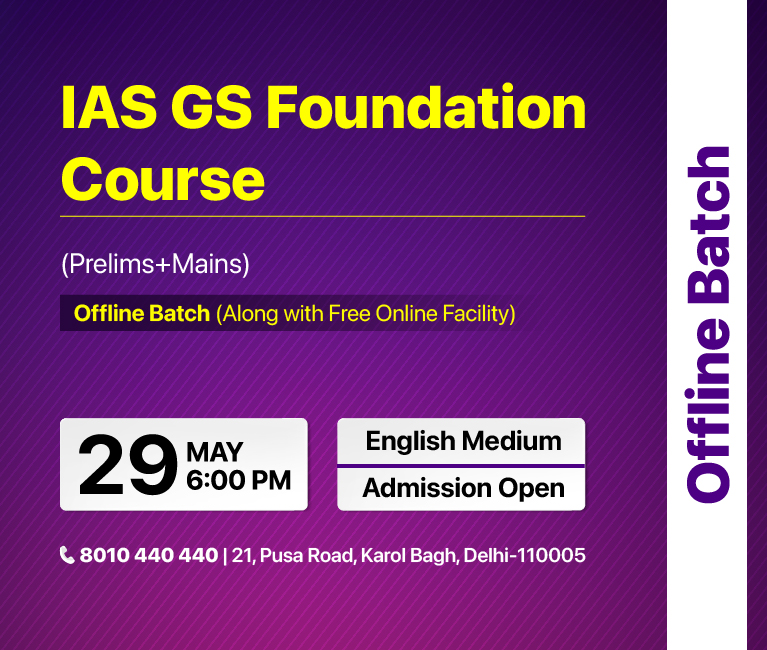
Economy
Biopharmaceutical Alliance
For Prelims: European Union, Biopharmaceutical Alliance, Neighbourhood First Policy, Vaccine Maitri, World Health Organization, Belt and Road Initiative
For Mains: Vaccine diplomacy, Strengthening Global Health Security, Global public health and international relations.
Why in News?
Recently, South Korea, India, the United States, Japan, and the European Union (EU) have launched the Biopharmaceutical Alliance to address drug supply shortages and enhance supply chain resilience in the wake of the Covid-19 pandemic.
- The inaugural meeting took place in San Diego, California during the Bio International Convention 2024.
What is the Biopharmaceutical Alliance?
- About: The Biopharmaceutical Alliance is a strategic partnership alliance aims to ensure a steady and secure supply of biopharmaceutical products worldwide and aid in vaccine diplomacy.
- It aims to coordinate bio policies, regulations, and research and development support measures among participating countries.
- The initiative originated from discussions between South Korea and the U.S. and expanded to include Japan, India, and the EU. By collaborating, the member countries hope to build a system that can withstand future global health crises.
- Need: The alliance was formed in response to the drug supply shortages experienced during the Covid-19 pandemic. The pandemic highlighted the need for a reliable and sustainable supply chain for biopharmaceuticals.
- By aligning bio policies, and regulations, the alliance promotes a cohesive approach to biopharmaceutical development.
- Operating Mechanism:
- Implementation: The member countries will start implementing the agreed coordination of bio policies and research support.
- Supply Chain Mapping: Developing a comprehensive map of the pharmaceutical supply chain to identify and mitigate vulnerabilities.
- Ongoing Collaboration: Continued collaboration and dialogue among the participating countries to ensure the alliance's goals are met.
Key Drug Shortages During the Covid-19 Pandemic
- The Covid-19 pandemic led to widespread shortages in several critical healthcare areas. Shortages of Covid-19 vaccines affected vaccination campaigns worldwide. The lack of vaccines slowed down the global response to the pandemic.
- Essential drugs, like Remdesivir, faced shortages, impacting the treatment of severe Covid-19 cases. These shortages led to challenges in managing patient care during peak infection periods.
- During the Covid-19 pandemic, there were significant shortages of several critical drugs, including: Antibiotics like amoxicillin and penicillin, which are essential for treating bacterial infections.
- The rise in Covid-19 cases caused a spike in demand for medical oxygen. Many countries struggled to meet the increased need for medical oxygen, essential for severe respiratory symptoms.
- There was a global scarcity of Personal Protective Equipment (PPE), including masks, gloves, and gowns. The PPE shortages posed significant risks to frontline healthcare workers, affecting their safety and ability to care for patients.
How Can Global Vaccine Diplomacy Address Drug Supply Shortages?
- Historical and Current Contexts: Historically, Western powers dominated health aid, influencing global health initiatives.
-
Currently, Russia, China, and India have transitioned from aid recipients to major vaccine producers, signalling a shift in global health dynamics.
-
-
Strategic Approaches of Global Vaccine Diplomacy:
-
Russia’s Technology Transfer: Russia has strong research and development (R&D) capabilities but limited production and distribution capacity. It utilised technology transfer to outsource vaccine production to countries in Asia, Latin America, and Eastern Europe.
-
Technology transfer not only promoted sales but also enhanced Russia’s soft power among developing countries.
-
-
India’s Mass Production: The country's vaccine diplomacy was characterised by the production of 60% of the world's vaccines even before the pandemic and is known as the "pharmacy of the world" due to its large volume of pharmaceutical production.
-
With a robust manufacturing base, India swiftly scaled up production of Western-invented vaccines, focusing on both donations and commercial sales through initiatives like Vaccine Maitri.
- Between January and April 2021, India exported more than 46 million doses to 65 countries, with nearly 80% of these being sold rather than donated.
- India donated vaccines to geopolitically important countries while selling to wealthier nations to cover manufacturing costs. It focused on neighbouring countries (Neighbourhood First Policy) and regions with significant Indian diaspora.
- India is playing a key role in vaccine diplomacy, addressing concerns of vaccine nationalism and inequity in supply. The World Health Organization (WHO) has criticised developed countries for hoarding vaccines, while many nations are turning to India to bridge the accessibility gap.
-
- China’s Comprehensive Investment: China extensively invested in vaccine development, production, and distribution, prioritising African and ASEAN countries to align with the Belt and Road Initiative.
- Pakistan became the largest beneficiary of China’s vaccine aid, reflecting geopolitical rivalry with India.
- BRICS Interactions: BRICS countries are interconnected in the vaccine industry. For example, Russia outsourced production to China and India when it received a large order from Brazil.
-
China conducted clinical trials in Brazil and Russia supplied API to Brazil and India for Covishield production.
-
-
-
Vaccine Diplomacy to Mitigate Drug Supply Shortages:
- Vaccine diplomacy can foster collaboration between countries. This can lead to sharing of raw materials and resources to streamline production across the supply chain. Improved communication and coordination to anticipate and address potential shortages.
- Vaccine diplomacy can expand vaccine production capacity by offering technology or production licences to other countries, encouraging the creation of new manufacturing hubs and freeing up existing facilities for other medications.
- Existing vaccine production facilities can be repurposed to manufacture essential drugs, diversifying supply chains.
- Reduces dependency on single-source suppliers, mitigating risks of supply disruptions during health crises.
Bio International Convention 2024
- The Bio International Convention 2024, also known as BIO 2024, recently concluded in San Diego, California .
- The event is the biggest gathering for biotechnology, with over 18,500 industry leaders from around the world. It includes researchers, business professionals, investors, and representatives from public pharmaceutical companies, biotech startups, academia, non-profits, and government.
Read more: India as a Net Exporter of Medical Consumables
|
Drishti Mains Question: Q. How can the Biopharmaceutical Alliance contribute to mitigating drug supply shortages and addressing future health crises? |
Important Facts For Prelims
Expansion of BRICS
Why in News?
Recently, BRICS foreign ministers held their first meeting since the BRICS was expanded to add Egypt, Iran, UAE, Saudi Arabia and Ethiopia in 2023.
- They have joined the BRICS with effect from 1st January 2024.
What is BRICS?
- About:
- BRICS is an acronym for the grouping of the world’s leading emerging economies, namely Brazil, Russia, India, China and South Africa.
- The BRICS Leaders’ Summit is convened annually.
- The 15th BRICS Summit was hosted by South Africa in 2023, and Russia will host the 16th Brics summit in October 2024.
- Formation of BRICS:
- The grouping was first informally formed during a meeting of the leaders of Brazil, Russia, India, and China (BRIC) on the sidelines of the G8 (now G7) Outreach Summit in St.Petersburg, Russia, in 2006, this was later formalised during the 1st BRIC Foreign Ministers' Meeting in New York in 2006.
- In 2009, the inaugural BRIC summit took place in Yekaterinburg, Russia. The following year (2010), South Africa joined to form the group known as BRICS.
Note:
- During the 6th BRICS Summit in Fortaleza (2014) the leaders signed the Agreement establishing the New Development Bank (NDB).
- Significance:
- The group (enlarged) consists of approximately 3.5 billion people, representing 45% of the world's population.
- Collectively, the economies of its members exceed USD 28.5 trillion, accounting for around 28% of the global economy.
- Iran, Saudi Arabia, and UAE, as part of the grouping, collectively contribute to approximately 44% of the global crude oil production.
What is the Geopolitical Importance of the Recently Included BRICS Members?
- The inclusion of Saudi Arabia and Iran boosts BRICS access to significant energy reserves, with Saudi oil increasingly directed to China and India, and Iran expanding its oil exports to China despite sanctions, highlighting the importance of energy cooperation within BRICS.
- Russia's exploration of new markets within BRICS for its energy exports diversifies the group's energy supply, reducing Russia's reliance on traditional markets and bolstering the coalition's energy security.
- The strategic inclusion of Egypt and Ethiopia enhances BRICS' geopolitical significance by providing greater influence and access to the crucial maritime trade routes in the Horn of Africa and the Red Sea region.
Read More: BRICS Expansion: Challenging Western Dominance
UPSC Civil Services Examination, Previous Year Questions (PYQs)
Q. Consider the following statements: (2016)
- New Development Bank has been set up by APEC.
- The headquarters of the New Development Bank is in Shanghai.
Which of the statements given above is/are correct?
(a) 1 only
(b) 2 only
(c) Both 1 and 2
(d) Neither 1 nor 2
Ans: (b)
Q. The ‘Fortaleza Declaration’, recently in the news, is related to the affairs of (2015)
(a) ASEAN
(b) BRICS
(c) OECD
(d) WTO
Ans: (b)
Q. With reference to a grouping of countries known as BRICS, consider the following statements: (2014)
- The First Summit of BRICS was held in Rio de Janeiro in 2009.
- South Africa was the last to join the BRICS grouping.
Which of the statements given above is/are correct?
(a) 1 only
(b) 2 only
(c) Both 1 and 2
(d) Neither 1 nor 2
Ans: (b)


Important Facts For Prelims
Multi-drug Resistant Pathogens in ISS
Why in News?
Recently, a collaborative study between scientists from the Indian Institute of Technology Madras (IIT-M) and NASA’s Jet Propulsion Laboratory (JPL) focused on understanding the behaviour of multi-drug resistant pathogens aboard the International Space Station (ISS).
What are the Key Highlights of the Study?
- Enterobacter bugandensis is associated with hospital-acquired infections and poses a significant treatment challenge due to its broad resistance to third-generation antibiotics like cephalosporins and quinolones.
- It is listed by the World Health Organization (WHO) as a priority for developing new antimicrobials.
- The ISS's unique environment of microgravity, heightened carbon dioxide, and increased radiation revealed accelerated mutations that differentiate them genetically and functionally from their Earth counterparts.
Antimicrobial Resistant-Microbes
- Antimicrobial-resistant microbes occur naturally and are found in people, animals, food, and the environment (in water, soil and air).
- They can spread between people and animals, including from food of animal origin, and from person to person.
- AMR is facilitated by the inappropriate use of medicines, for example, using antibiotics for viral infections such as the flu.
International Space Station
- The ISS is a large spacecraft that orbits Earth at a low altitude (approx 250 km), hosting astronauts from various countries who live and work there.
- It serves as a research laboratory where scientific experiments are conducted in microgravity conditions, advancing our understanding of space and benefiting life on Earth.
- The International Space Station is currently managed by the US, Russia, Canada, Japan, and European space agencies.
- Since 2000, the station evolved from an outpost into a highly capable microgravity laboratory.
- Since 2000, the ISS has transformed from a basic outpost into an expansive microgravity research facility, accommodating over 260 people from 21 countries, with plans for research until 2030.
UPSC Civil Services Examination, Previous Year Question (PYQ)
Prelims:
Q. Which of the following are the reasons for the occurrence of multi-drug resistance in microbial pathogens in India? (2019)
- Genetic predisposition of some people
- Taking incorrect doses of antibiotics to cure diseases
- Using antibiotics in livestock farming
- Multiple chronic diseases in some people
Select the correct answer using the code given below.
(a) 1 and 2
(b) 2 and 3 only
(c) 1, 3 and 4
(d) 2, 3 and 4
Ans: (b)
Mains
Q. Can overuse and free availability of antibiotics without Doctor’s prescription, be contributors to the emergence of drug-resistant diseasesin India? What are the available mechanisms for monitoring and control? Critically discuss the various issues involved. (2014)


Rapid Fire
Satellite-based Tolling System
The National Highway Authority of India (NHAI) has invited expressions of interest (EoI) for the implementation of a satellite-based electronic toll collection system.
- The winning entity will have to develop a geo-referenced map and toll-charging software for the Global Navigation Satellite System (GNSS).
- A georeferenced digital map or image has been tied to a known Earth coordinate system, so users can determine where every point on the map or aerial photo is located on the Earth's surface.
- A GNSS is the generic term for any of the satellite constellations that broadcast positioning, navigation and timing data. It is used in all forms of transportation like space stations, aviation, maritime, rail, road and mass transit.
- Indian Regional Navigation Satellite System (IRNSS) is an autonomous system designed to cover the Indian region and 1500 km around the Indian mainland. The system consists of 7 satellites.
- NHAI plans to implement the GNSS-based electronic toll collection system alongside RFID-based Fastags currently being used by vehicles.
- FASTag is a device that employs Radio Frequency Identification (RFID) technology for making toll payments directly while the vehicle is in motion.
Read more: NHAI


Rapid Fire
Satnamis Protest
Recently, a large mob from the Satnami community in Chhattisgarh’s Baloda Bazar district attacked the Superintendence of Police (SP) office, over the alleged desecration of a 'jaitkhamb' (victory pillar, a sacred structure for the Satnami community).
Satnami Community:
- It is the largest Scheduled Caste (SC) community, including peasants, artisans, and untouchables in Chhattisgarh.
-
It was founded by Guru Ghasidas, a 19th-century saint, who preached monotheism, believing in one God called Satnam "Truthful Name" and social equality.
- They've faced challenges in securing land rights, obtaining fair employment opportunities, and accessing education and healthcare encountered social prejudice and haven't had a strong voice in government.
- The Chhattisgarh government renamed a section of the Sanjay-Dubri Tiger Reserve to Guru Ghasidas National Park in his honour.
Read more: Protests in Chhattisgarh.


Rapid Fire
Sun Images Captured by Aditya-L1
Recently, the Indian Space Research Organisation (ISRO) released images captured by its Aditya-L1 solar mission during a significant solar (geomagnetic) storm that occurred in May 2024.
- The remote sensing payloads Solar UltraViolet Imaging Telescope (SUIT) and the Visible Emission Line Coronagraph (VELC), along with other payloads captured these images from the Lagrange point in space.
- These images will help in studying solar flares, energy distribution, sun spot, understanding and predicting space weather, monitoring solar activity and UV radiation over a wide wavelength range, and also aid in the study of long-term solar variations and its impact on the Earth's environment.
- It is India's first dedicated solar mission, developed by the ISRO, in collaboration with international partners.
- It will study the Sun and its corona and provide valuable data and insights into the Sun's behaviour, which is crucial for understanding the impact of solar activity on the Earth's climate and space weather.
Read more: Solar Storms, Indian Space Research Organisation (ISRO)


Rapid Fire
JIMEX 24
The eighth edition of the bilateral Japan-India Maritime Exercise 2024 (JIMEX 24) is set to take place in Yokosuka, Japan.
- The exercise involves harbour and sea phases, with professional, sports, and social activities at the harbour, followed by joint naval war drills at sea to improve their interoperability across various operations.
- The Indian Navy (IN) is being represented by INS Shivalik and the Japan Maritime Self-Defense Force (JMSDF) is being represented by the Guided Missile Destroyer JS Yugiri.
- Integral helicopters from both navies will also participate in the joint exercise.
- JIMEX 24 provides an opportunity to learn from each other's best practices and facilitates operational interactions between IN and JMSDF to foster cooperation and reaffirm their shared commitment towards maritime security in the Indo–Pacific.
- Other bilateral exercises between India and Japan include the Malabar exercise (Naval Exercise), ‘Veer Guardian’ SHINYUU Maitri (Air Force), and Dharma Guardian (Army).
Read more: Japan-India Maritime Exercise, Maritime security



